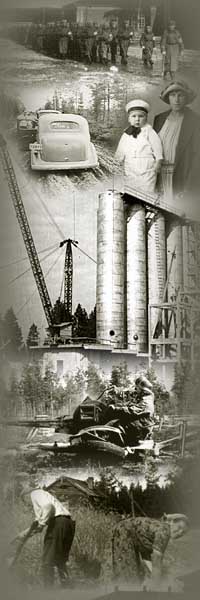 |
 |
|
Summary:
Olavi K. Fšlt, Our Japan - The image of Japan in Finland in 1994
The topic of this article is the image of Japan in Finland in 1994. This study is a part of my longterm
project in which I am examining Japan in the world from the viewpoint of mental images
and various interactions and incidences. In 1994 Finland, grappling with major economic
difficulties, was seeking her way toward EU membership. After the disintegration of the Soviet
Union Finland had detached herself from Russiaís sphere of influence, into which for all practical
purposes she had ended up already in the autumn of 1939 as a result of the Molotov-Ribbentrop
agreement. This situation was sealed by the Agreement of Friendship, Cooperation and Mutual
Assistance made between the Soviet Union and Finland in 1948. Earlier I have studied the image
of Japan just prior to this change in Finlandís status that was brought about by power politics.
For her part Japan, who had lost the war, had by the early 1970s risen to become the worldís
second largest economic power after the USA, which had awakened great universal interest
toward the country and its culture. However, by the early 1990s rapid economic growth had
reversed into an economic recession, which lasted until the beginning of the 2000s. At the same
time, because of the large imbalance in trade between the countries, criticism toward Japanís
economic policy had grown in the USA. This phenomenon is known internationally as Japan
bashing. Indeed by the mid-1990s this phenomenon has already begun to fade.
In examining the image of Japan during that transitional phase in both Finlandís and Japanís
history, I take as an example articles on Japan that appeared in Tampereís nationally important
independent newspaper, Aamulehti, recognized until 1992 as an organ of the conservative
Coalition Party. The material was gathered comprehensively from editorials and news articles.
The main features of the image projected by Aamulehti were Japanís economic power, corrupt
domestic policy, exotic culture, and common features linking Finnishness and Japaneseness,
with the most emphasis on the latter (23). Less but quite equal attention was given to the exotic
culture (12) and economic miracle (9), while the corrupt society received the least attention (5).
As a whole, the image was influenced by the traditional positive image of Japan in Finland.
Culture, in particular, has always been a conveyor of this positive image. Negative features
were brought up mainly when describing the major change in Japanís society and political
and economic changes, which most likely reflected not only the international Japan bashing
phenomenon, but also the mental anxiety caused by Finlandís own deep recession and thereby
in part the feeling of ďbeing in the same boatĒ.
While the image of Japan before WWII was focused on political and military power, now
in the 1990s this power was conveyed through economic life. While Japanís and Finlandís
closeness in the 1930s was linked to political and security-related connections, now this closeness
consisted of cultural similarity. While earlier the hope that Japan would provide support against
the threat of the Soviet Union had played a role in the background, now the image of closeness
depicted the internationalization of Finlandís society and a certain type of cultural unsureness.
We as if sought support from the interest in Finnish culture shown by a completely different
culture and people, even to the extent that we were blotting out our own culture and looking for
common features in a foreign culture. Finland truly put on a kimono and we Japanese were all
tongue-tied.
Faravid
32/2008
|
 |